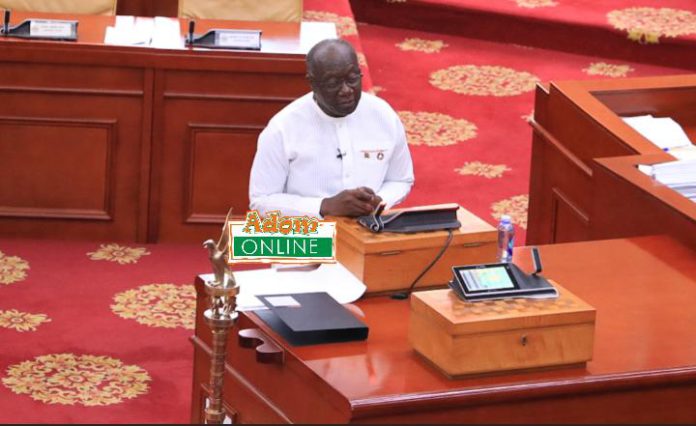The government has met all benchmarks of structural reforms for the release of the second tranche of the $3 billion International Monetary Fund (IMF) support.
The benchmarks, commonly referred to as conditionalities, include the development of a comprehensive stock taking of payment arrears accumulated by all ministries, departments and agencies (MDAs); a strategy to rebuild financial institutions and strengthen the financial sector as well as the publication of an updated energy sector recovery plan.
Completing the benchmarks will trigger the second tranche of another $600 million which is expected to hit the accounts of the Bank of Ghana (BoG) in November this year.
This came to light in Accra Wednesday during a technical briefing session with sections of the media and other stakeholders on the Mid-Year Budget Review.
A director at the Ministry of Finance (MoF) explained that the arrival of the second tranche would bring it to $1.2 billion of the three-year extended credit facility (ECF).
“We have finalised a comprehensive stock-taking of payables accumulated by all MDAs, designed a payable clearance plan and laid out a structural reform plan to reduce future accumulation of arrears.
“We have also completed a strategy to strengthen the financial sector and rebuild financial institutions’ buffers, in collaboration with the Fund staff,” the director added.
Context
The Bank of Ghana (BoG) received the initial instalment of $600 million of the ECF as part of the $3 billion IMF-supported post COVID-19 Programme for Economic Growth (PC-PEG) approved by the IMF Executive Board on May 17, this year.
It is aimed at restoring macroeconomic stability and debt sustainability, building resilience through the implementation of wide ranging and strong structural reforms and laying the foundation for stronger and more inclusive growth, while protecting the poor and vulnerable.
To ensure effective implementation of the IMF programme, and by extension the mid-year budget, the Ministry of Finance has put in place an extensive outreach/sensitisation programme to bring all key stakeholders on board.
While monthly monitoring of the programme is being spearheaded by the Cabinet and Economic Management Team (EMT), six thematic groups are also providing weekly monitoring around various broad areas such as on public finance management, macro fiscal, state owned enterprises (SOEs) performance (including energy and COCOBOD), tax policy and administration, financial sector stability, and growth and social protection.
Two reviews
The director added that there would be two reviews of the IMF programme in a year based on end-June and end-December as test dates.
This is to assess achievement of targets set under the performance indicators, namely quantitative performance criteria, indicative targets, and structural benchmarks in 2023.
The first review is scheduled for September 2023 with a potential Board approval date in November this year.
A successful review will trigger an immediate release of the second tranche of $600 million, the Daily Graphic gathered.
Key problems
The director said key problem areas so far included the accumulation of arrears and meeting of social protection minimum spending.
“Some key risks that have the potential to derail the programme have been identified and mitigation measures outlined as well,” the director explained.
The risks include energy sector shortfall, lower revenue collection against the programme’s targets, tight domestic and external financing conditions, upcoming debt service on new restructured bonds, and weak enforcement of the Ghana Integrated Financial Management Information system (GIFMIS).
Engagements
The Director of Budget at the MoF, Dr Alex Amankwah-Poku, said the 123-page mid-year budget review was designed after engagements with diverse stakeholders, including Organised Labour, the Association of Ghana Industries, the Ghana Union of Traders Association, among others.
He said the 2023 budget, the government outlined a series of measures to mitigate the impact of the severe economic challenges and also to preserve growth.
They include the implementation of flagship programmes, such as one-district, one-factory, Planting for Food and Jobs – Phase II, Strategic Anchor Industries, Infrastructure for Poverty Eradication Programme, YouStart, Agenda 111, among others.
He said within the context of the PC-PEG, the interventions assumed greater significance in promoting growth and medium-term fiscal consolidation.
Purpose of mid-year budget
The Chief Director of the Ministry of Finance, Eva Mends, who chaired the meeting, said the review was to provide an update on economic developments since the presentation of the 2023 budget.
“Significant developments have taken place since the presentation of the 2023 budget to Parliament in November 2022,” she added.

